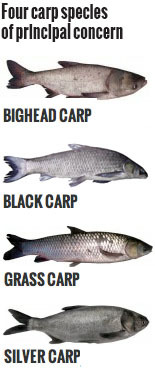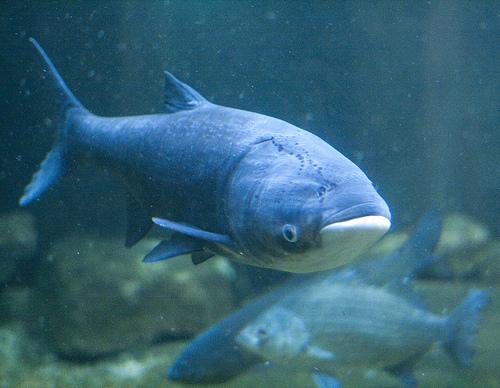Knowing how to look for and report Invasive Asian Carp is a growing need on the St. Croix River!
“The flesh of the silver carp is quite palatable. I have cooked and eaten silver carp and can testify that when they are promptly cleaned and processed, they taste like any other firm white fish. In a blind taste test, most people would not be able to distinguish between carp and cod. But in today’s market, we don’t even have to worry about whether people are willing to try eating something labeled “carp.”
Walk into the frozen food section of any grocery store and look at the fish filets and fish sticks. Most of the packages don’t say what species of fish it is. They could contain anything from guppies to goldfish and we wouldn’t know the difference.
I spent some time discussing this with Phillippe Parola, a Parisian chef who has been cooking for decades in Baton Rouge, La. As we hunted and cooked another invasive species (nutria, a delicious giant rodent), he described his efforts to get federal approval to market carp under the label “silver fin.” Sort of like how Patagonian toothfish was rebranded into “Chilean sea bass.” Parola’s labeling has been approved. The trouble is that there is still no network of local processing plants near the Missouri River capable of processing silver carp into the types of food products that the American market will buy. Carp have unusual bone structure compared with most other fish, and they require different technology to process.
What if, instead of spending hundreds of millions of dollars on barriers that will eventually be circumvented, we spend 10 percent of that money on a few processing plants? With a market that would pay 25 cents or more per pound, commercial fishermen would be able to make a reasonable living ridding the water of silver carp. When the fish finally start to take over the Great Lakes—it’s just a matter of time—build more processing plants.
This approach would probably never completely eliminate silver carp in the United States. But it can keep them controlled to a point where they don’t pose such a serious threat to ecosystems or economies.” – Jackson Landers
Read more here.


